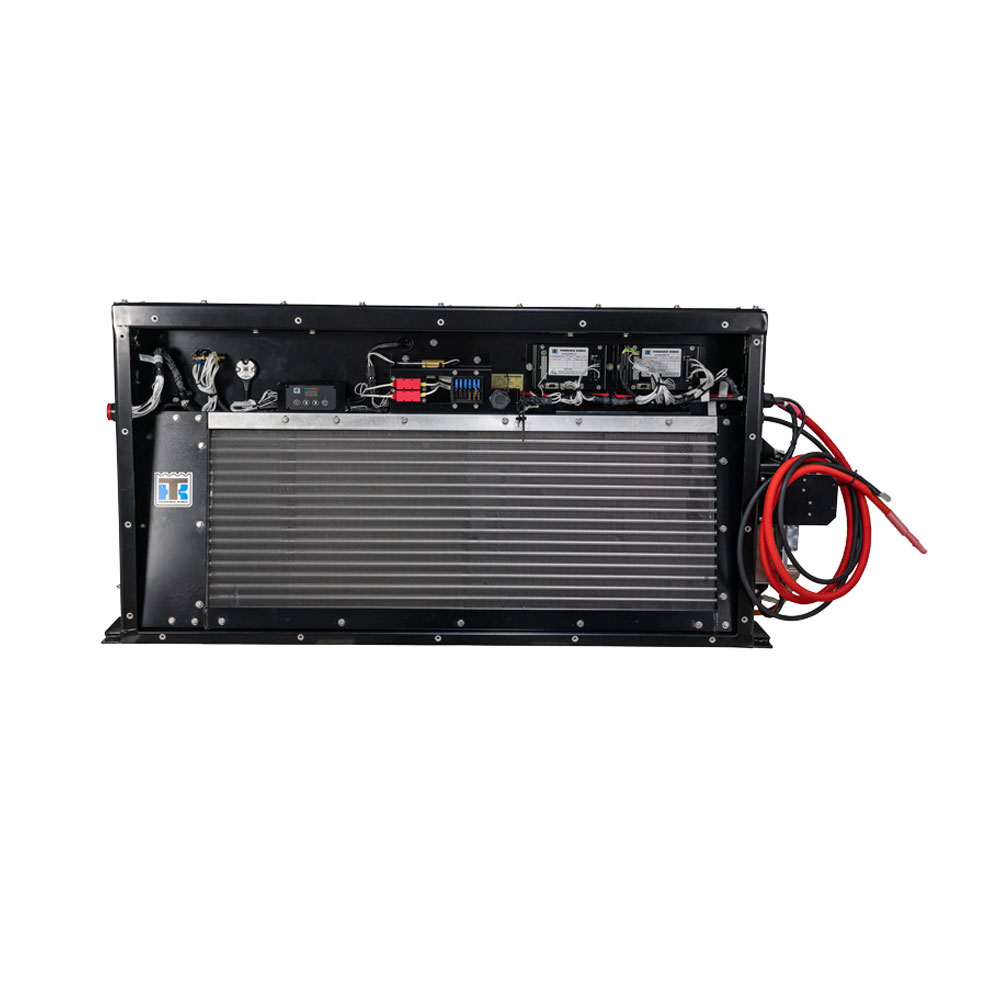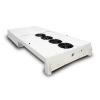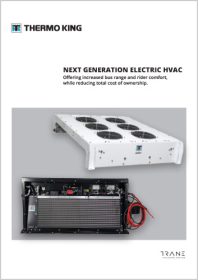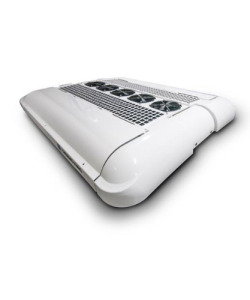BENEFITS OF AN ALL-ELECTRIC BUS HVAC SOLUTION
As part of a national mandate, public transportation agencies are expanding their implementation of zero-emission electric buses. From a sustainability standpoint it makes sense however, battery range still makes the transition challenging. The HVAC system on a transit bus consumes up to 40% of the total available electrical energy, so reducing the burden on the batteries is key. Lowering power usage makes it possible to extend the range of the bus and achieve cost savings while maintaining rider comfort.

Optimizing power usage while reducing electrical system battery load to improve bus range
- Better use of electrical system components.
- Provides power when it’s needed.
- Increases space and energy economy by up to 25% compared to Thermoking’s current electric HVAC system.
- One single variable speed horizontal compressor
- Providing a wider frequency range of 25Hz to 90Hz
- Consuming power when needed to match the load of the bus to increase efficiency
- Using backward-inclined blowers with noise suppression and more variable speed fans (from 4 to 6) enhances system efficiency and reduces power consumption without affecting airflow.
Controlling interior air temperature for improved rider comfort
- Improving temperature control inside the bus for a better customer experience
- Noise reduction helps provide a quiet and comfortable ride
- The Battery Thermal Management System is now part of the unit
- Cuts down on the need for a second motor, an extra coil, and a second compressor.
- Better control of battery water temperature
- Reduces the number of refrigerant connections and possible leak spots (effects of CARB regulations on California homes)
Reduced total cost of ownership
- Minimized the number of parts that require repair
- Reduced the cost of part replacement, maintenance, and service
- Improved battery coolant temperature control









